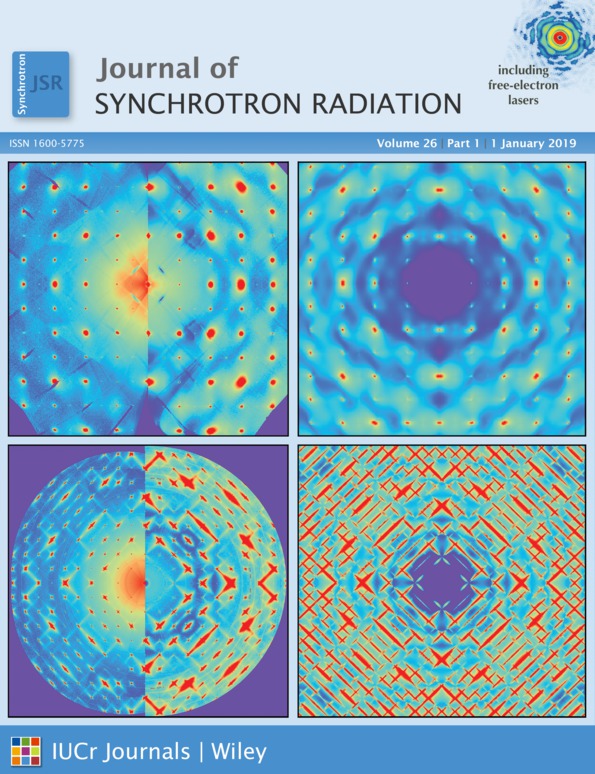Phenomenological and numerical analysis of power evolution and bunching in single-pass X-ray FELs
Abstract
The harmonic power and bunching evolution in X-ray single-pass free-electron lasers (FELs) is modelled and the harmonic generation in a phase-shifted two-frequency FEL is explored. The advanced phenomenological FEL model, which is validated numerically and experimentally, is employed. The model accounts for major losses for each harmonic individually; it is compared with reported experimental data and with PERSEO numerical simulations, which are performed here for a variety of experiments. The latter cover the radiation wavelength range 0.15–300 nm. The phenomenological description is based on a few key FEL parameters: electron beam section, current, energy and its spread and divergence. The model is employed for modelling harmonic bunching and power evolution in a phase-shifted X-ray FEL with a two-frequency undulator, where lower harmonics with numbers less than nth are suppressed by the electron–photon phase shift of kπ/n, k = 2, 4, …, between the undulator sections. The benefits of the two-frequency phase-shifted FEL are highlighted. FEL-induced energy spread is shown to be three times lower than in a FEL without the phase-shift. The high-power harmonic and sub-harmonic radiation in such a FEL is demonstrated. In particular, powerful ∼14 GW X-ray radiation at λ5 = 0.15 nm from electrons with energy of 5.47 GeV and beam current ∼3.66 kA is possible in a two-frequency phase-shifted FEL at 30 m; this constitutes half of a FEL length where a common planar undulator radiates the same wavelength and power at the fundamental harmonic. Moreover, about a three times lower energy spread is induced by the dominant fifth harmonic, and the harmonic power can be thousands of times higher than in a common planar undulator FEL.




